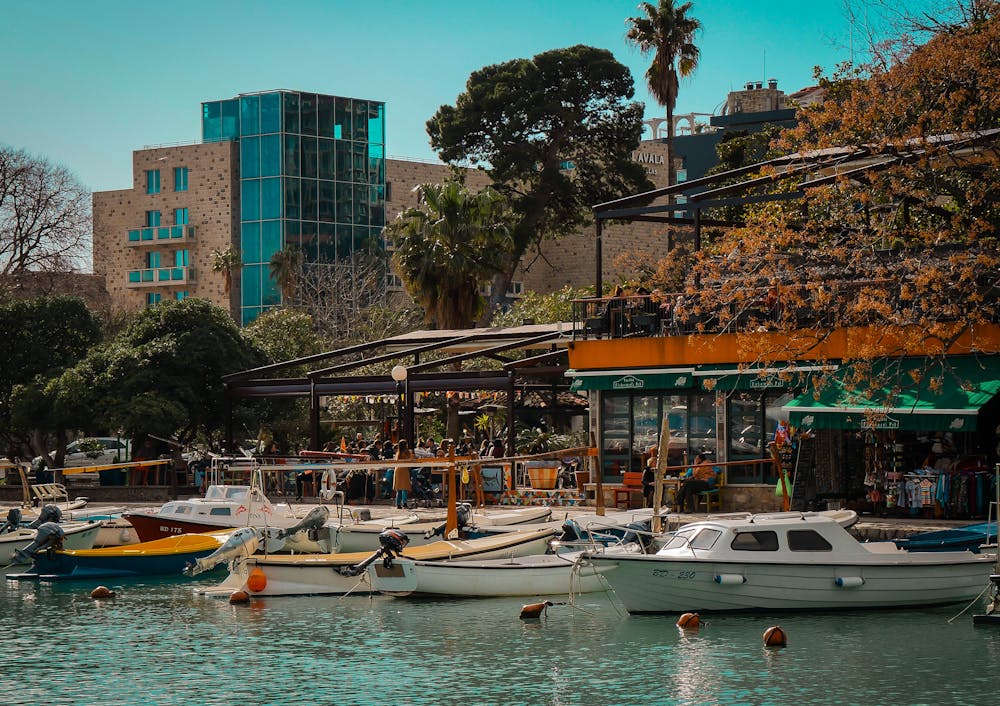Montenegro, a land of breathtaking beauty and profound heritage, is too often overshadowed by the giant European neighbours that it shares. But those who bother to look beneath its façade quickly discover a country of medieval towns and cities, fortresses, and unspoilt countryside. From the grandeur of its walled cities to the serenity of its mountain scenery, Montenegro is an outdoor museum of history and culture.
One of the most effective means to truly tap the depth of Montenegro is to have the choice to explore freely on your terms. Localrent, which works with local car hire agencies, affords visitors to the country the privilege of canvassing for other cars to meet their travels. Whether you tear down the shore roads or move into the virgin interior, using your own ride ensures that you are at liberty to uncover the secrets of the nation with abandon.
The Ancient Background of Montenegro
Montenegro itself has a long history stretching millennia back into the past, with influences as far afield as Illyrians, Romans, Byzantines, and Slavs coming together to form the overall identity of the country. Archaeological evidence hints that the country has been occupied continuously since Paleolithic times, but until the Illyrians arrived in 5th century BC, there was no systematic civilization.
Roman Influence and Early Christianization
Romans arrived in the 2nd century BC and integrated the region into their enormous empire. Doclea (a little beyond present-day Podgorica) was one of the cities that thrived during the Romans, and prettily built roads, aqueducts, and grand temples were the signature of the urban landscape. Christianity engulfed the region in the 4th century AD, and remnants of early Christian basilicas tell of this era.
After the fall of Rome, the Byzantine Empire dominated the region, leaving behind a legacy of Orthodox Christian traditions and imposing buildings. This Byzantine legacy remains to this day in Montenegro’s monasteries and frescoed churches, which have endured to the modern era.
Medieval Montenegro: The Formation of Independent States
By the 12th century, Montenegro was an independent state ruled by the Vojislavljević dynasty. There was a period of widespread fortification, and castles and fortified towns began to be built to repel invaders.
The Fortress of Kotor: A Venetian Masterpiece
One of the most famous remains of the era is Kotor, a town whose walls crown the face of the Bay of Kotor. Occupied by the Venetians between 1420 and 1797, Kotor was a busy port and an important component of the Venetian system of defense. The San Giovanni Fortress, which looms above the town, hints at something of the strategic thinking of the time and commands breathtaking views along the Adriatic coast.
Cetinje: The Birthplace of Montenegrin Identity
Cetinje, the old capital of Montenegro, was situated at the hub of the country’s political and cultural identity. Established in the 15th century by Ivan Crnojević, the city served as the seat of the princes of Montenegro and a center of Orthodox Christian heritage. Cetinje Monastery, in which holy relics and manuscripts are stored, serves as a monument to Montenegrin religion and resilience.
The Ottoman Threat and Montenegro’s Furious Resistance
The Ottoman Empire wished to enter Montenegro in the 17th and 16th centuries. The other Balkan states conquered by the Ottomans had lost all their military and fighting will, but Montenegro retained a desperate mentality to remain stubborn, and its rolling countryside was natural protection. Montenegrins, driven by their battle-kings or Vladikas, resisted the Ottomans through the methods of guerrilla warfare and cultivated an impression of invincibility of will.
Perhaps the most celebrated of these was the Battle of Krusi in 1796, when Montenegrin soldiers, outnumbered heavily, defeated the Ottoman soldiers and solidified their independence. This warrior heritage and natural pride continue to be an integral part of Montenegro’s national identity.
The Modernization of Montenegro and the Birth of a Nation
It was in the 19th century that Montenegro was highly modernized by Prince-Bishop Petar II Petrović-Njegoš, a saint in Montenegrin tradition. A statesman, certainly, but one who was also a poet and philosopher, Njegoš left to his people his epic work “The Mountain Wreath,” which is still a model of Montenegrin literature.
Montenegro was formally declared an independent state in 1878, and in the early 20th century, it was a kingdom. Two World Wars and the later membership of Yugoslavia totally changed the political landscape of the country. It took 2006 for Montenegro to once again become an independent country, with an independent future combined with the ancient past still intact in all its glory.
Cultural and Natural Wonders of Montenegro
Montenegro is a country where history and nature complement each other perfectly, with plenty of options for the seeker of off-the-beaten-path experiences.
Durmitor National Park: A Natural Fortress
For travelers looking for pristine nature, Durmitor National Park is an adventure not to miss. This UN World Heritage site boasts glacial lakes, a black forest, and the Tara River Canyon, among the deepest in Europe. The park was for centuries a sanctuary for Montenegrins both as a refuge for nature and as a natural fortress in times of war.
Ostrog Monastery: A Spiritual Marvel in the Cliffs
From the face of a sheer rock cliff, Ostrog Monastery is one of the most necessary pilgrimage sites in the Balkans. This 17th-century monastery attracts the faithful as well as curiosity seekers both to a refuge of sorts from the world and to witness the remarkable stories of the history of the monastery unfold.
The Bay of Kotor: A Timeless Adriatic Gem
No Montenegro road trip would be complete without a visit to the Bay of Kotor, Europe’s southernmost fjord. Picturesque medieval towns of Perast and Risan with their stone palaces and water promenades bring to mind a world bygone when the Venetians dominated the Adriatic trade routes. A boat tour to Our Lady of the Rocks island gives a touch of legend to the journey, as its artificial island was built by a centuries-long devotion of local religious faith.
A Timeless Adventure Awaits
Montenegro’s past is carved on its landscapes, fortresses, and lifestyles, and therefore, it is a true and real destination for all who wish to relish the actual flavor of the past. From walking around ancient Kotor streets, hiking along Durmitor trails to standing atop a centuries-old parapet fortress, each trail in Montenegro is a ride through the centuries.
For travelers who desire to travel their own way, car rental via Localrent gives the freedom to venture off the tourist trail and find the essence of Montenegro. With its millennia-old past and scenery as lovely as ever, this teeny-tiny but obstinate country is an ageless jewel just waiting to be discovered.

